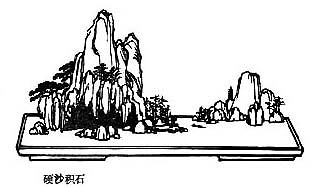Sun Zi 
 – The Art of War
– The Art of War
Chinese strategy explained : know yourself and the ennemy, use deception, spies, and "win with ease". Tr. Giles (en, annotated) and Amiot (fr).
Weak Points And Strong
Chang Yu attempts to explain the sequence of chapters as follows: "Chapter IV, on Tactical Dispositions, treated of the offensive and the defensive; chapter V, on Energy, dealt with direct and indirect methods. The good general acquaints himself first with the theory of attack and defense, and then turns his attention to direct and indirect methods. He studies the art of varying and combining these two methods before proceeding to the subject of weak and strong points. For the use of direct or indirect methods arises out of attack and defense, and the perception of weak and strong points depends again on the above methods. Hence the present chapter comes immediately after the chapter on Energy."
Sunzi VI. 4.
Appear at points which the enemy must hasten to defend; march swiftly to places where you are not expected.
An army may march great distances without distress, if it marches through country where the enemy is not.1
You can be sure of succeeding in your attacks if you only attack places which are undefended.2 You can ensure the safety of your defense if you only hold positions that cannot be attacked.3
Giles VI.5,6,7.
Si, après avoir longtemps attendu, vous ne voyez pas que l'ennemi se dispose à sortir de son camp, sortez vous-même du vôtre ; par votre mouvement provoquez le sien, donnez-lui de fréquentes alarmes, faites-lui naître l'occasion de faire quelque imprudence dont vous puissiez tirer du profit. S'il s'agit de garder, gardez avec force : ne vous endormez point. S'il s'agit d'aller, allez promptement, allez sûrement par des chemins qui ne soient connus que de vous. Rendez-vous dans des lieux où l'ennemi ne puisse pas soupçonner que vous ayez dessein d'aller. Sortez tout à coup d'où il ne vous attend pas, et tombez sur lui lorsqu'il y pensera le moins. Pour être certain de prendre ce que vous attaquez, il faut donner l'assaut là où il ne se protège pas ; pour être certain de garder ce que vous défendez, il faut défendre un endroit que l'ennemi n'attaque pas. Si après avoir marché assez longtemps, si par vos marches et contre-marches vous avez parcouru l'espace de mille lieues sans que vous ayez reçu encore aucun dommage, sans même que vous ayez été arrêté, concluez : ou que l'ennemi ignore vos desseins, ou qu'il a peur de vous, ou qu'il ne fait pas garder les postes qui peuvent être de conséquence pour lui. Évitez de tomber dans un pareil défaut.
Amiot

The Art of War – Sun Zi VI. 4. – Chinese off/on – Français/English
Alias Sun Tzu, Sun Wu, Sun Tse, Sunzi Bingfa, Souen Tseu, Souen Wou, 孫武.
The Book of Odes, The Analects, Great Learning, Doctrine of the Mean, Three-characters book, The Book of Changes, The Way and its Power, 300 Tang Poems, The Art of War, Thirty-Six Strategies
Welcome, help, notes, introduction, table.
Index – Contact – Top
